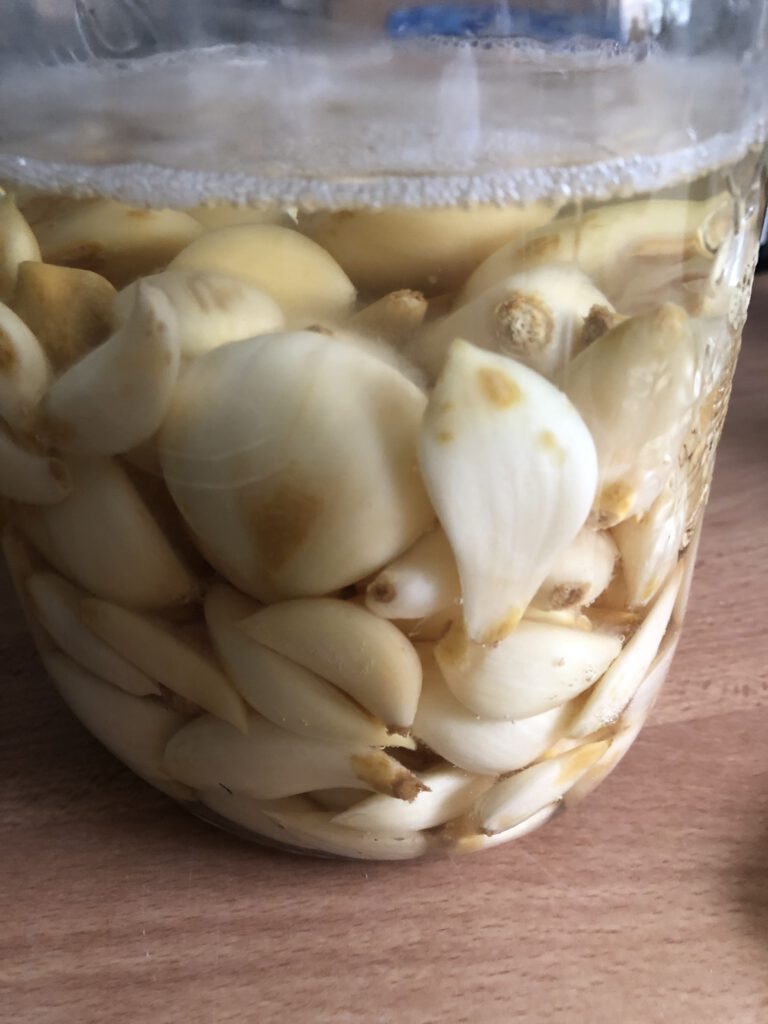
Garlic in Japanese Cooking
When reading modern Japanese recipes, the chances of finding garlic, especially in combination with meat are quite high, and of course there are those recipes developed by non-Japanese as well…
But one of the fundamental precepts of Washoku is the enhancement of inherent taste of the ingredients, something that would be completely masked by the use of garlic.
So, from the viewpoint of Washoku, garlic should not be used. But of course, garlic has been eaten in Japan throughout the centuries.
An early source is the Manyôshû from the 7-8th century where garlic is used as a condiment with a miso like seasoning and vinegar to be eaten with raw fish. There is another early example to be found, although not in a written source but as a remnant in a Shintô offering ritual.
Garlic is used as an offering at the Kamigamo Shrine in Kyôto. These offerings are usually unchanged from the time that the shrines were built and after offering them to the Kami as Shinsen, these are then cooked and eaten as Naorai, further deepening the connection between Kami and shrine adherents.
The Edo period is known for its many cookbooks that were printed, some of which have survived the time and can be read today. One of a few examples of Garlic was in a Soup with raccoon dog, Tanuki, as the meat is on the smelly side, so the garlic was used to hide the stink.
Another use, still found today, is sliced garlic with flame grilled, rare Katsuo fish slices, Katsuo no Tataki. This is a specialty of Tosa province, modern Kôchi of Shikoku. The reason for this dish can be found in the Korean invasion by toyotomi hideyoshi at the end of the 16th century, where the feudal lord of Tosa got to taste some local cuisine, including a dish that was similar to what is eaten now as Katsuo no Tataki.
Korean influence can also be seen in Aizu Wakamatsu Horse Sashimi, where the thin slices of Horsemeat are eaten with a spicy, garlicky Miso blend.
Horse eating, which was seen as only fit for prisoners, started in Aizu during the Boshin War with the Tokugawa troops being defeated by the imperial army. The beaten Aizu warriors cooked killed or wounded war horses to feed the injured. Sashimi only started with a visit of the Korean born pro and sumo wrestler in the 1950s in Aizu. He checked out a horse meat shop and asked for some slices of meat which he ate with aforementioned spicy miso, from where it took off and became popular.
So is Garlic traditional? In a way, it is. Is it Washoku? Definitely not.